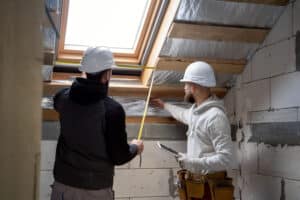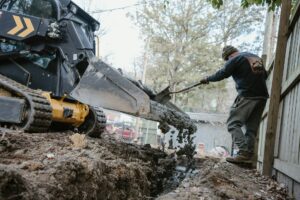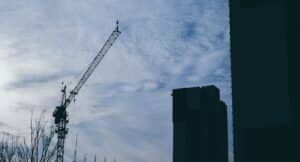Living in Koh Samui can be like residing in paradise, but it also comes with unique challenges, especially when it comes to drainage problems. The island’s tropical climate, with its heavy rains and lush landscapes, can create situations where homes struggle to manage excess water effectively. This often leads to issues like water pooling in the yard, soil erosion affecting gardens, and even damaging foundations.
These drainage issues are more than just a minor inconvenience. They can lead to significant damage if not addressed properly. Understanding the root cause of these problems is the first step towards finding effective solutions. By taking the time to assess the drainage system in your home, it becomes easier to tackle these challenges head-on. With a few smart adjustments and regular maintenance, you can enjoy the island lifestyle without the worry of water damage lurking around every corner.
Understanding Common Drainage Issues in Koh Samui
Koh Samui’s beautiful landscapes and tropical weather are part of what makes it such an attractive place to live. However, the island’s unique climate and geography can lead to significant drainage challenges for homeowners. The heavy rainfall during monsoon season, combined with the hilly terrain and sandy soils, means water doesn’t always flow away easily. This can cause puddles that won’t drain, gardens losing soil, and even cracks in your home’s foundation.
Water pooling is a common issue, often found in areas where the land doesn’t slope properly. When this happens, water can gather around the home, potentially seeping into basements or lower floors. Soil erosion is another problem, where the flowing water carries away the top layer of soil. This can damage gardens, making it hard for plants to grow, and expose tree roots, which can affect the stability of the landscape.
Foundation damage is perhaps the most serious concern, as water that collects near the base of the house can weaken the foundation over time. This might result in cracks in walls or uneven floors, which are costly to repair. Addressing these drainage issues early is key to protecting your home. Understanding how these problems occur is the first step in finding effective solutions that preserve both your property and the natural beauty of Koh Samui.
Assessing Your Home’s Drainage System
Knowing how to assess the drainage system in your home can help you address issues before they become major problems. Start by taking a walk around your property right after a heavy rainstorm. Look for any areas where water pools for a long time. This can indicate places where the drainage isn’t working properly.
1. Gutters and Downspouts: Check your gutters and downspouts regularly. Make sure they’re not clogged with leaves or debris, as this can cause water to spill over the sides and onto the ground near your foundation. The downspouts should direct water at least a few feet away from the house.
2. Grading: Examine the slope of the land around your home. Ideally, the ground should slope away from your house to guide rainwater away from the foundation. If it doesn’t, you might need to regrade the landscape to improve water flow.
3. Soil Condition: Assess the condition of your soil. Sandy soil, which is common in Koh Samui, drains quickly but doesn’t hold water well, leading to erosion. Clay-based soils, on the other hand, can hold too much water and drain slowly.
4. Basement or Crawl Space: Look for signs of moisture in the basement or crawl space. This might include damp walls or floors, or the presence of mildew or mold.
By regularly checking these areas, you can spot potential problems early. This allows you to take steps to improve your drainage system and protect your home from water-related damage. Simple actions like keeping gutters clean and ensuring proper grading can make a big difference in maintaining a healthy drainage system.
Effective Solutions for Improving Drainage
Once you have assessed your home’s drainage system, it’s time to explore effective solutions to improve it. Each home is unique, and the right solution depends on specific conditions and issues you face.
1. French Drains: These are simple yet effective solutions for many drainage problems. A French drain involves digging a trench at a slight incline and filling it with gravel and a perforated pipe. Water easily flows into the trench and is directed away from the problem areas. French drains are ideal for dealing with water pooling in specific spots around your property.
2. Rain Gardens: Installing a rain garden can help manage excess water while also adding beauty to your yard. These gardens are planted in a low area where water tends to collect. Deep-rooted plants in these gardens can absorb large amounts of water, reducing soil erosion and preventing water from pooling.
3. Regrading the Landscape: If your yard slopes towards your home, regrading can help solve drainage troubles. This involves reshaping the land to create a slope that directs water away from your house. It’s a more significant undertaking but provides a long-lasting solution.
4. Dry Wells: Dry wells are underground structures that collect water and slowly release it into the surrounding soil. This is useful for areas with frequent downpours where water needs to be absorbed efficiently.
Choosing the right solution requires considering the specifics of your property and the severity of your drainage issues. Implementing one or more of these methods can greatly enhance your drainage system, protecting your home from water-related damage.
Preventative Measures to Maintain Good Drainage
Keeping your drainage system in top shape is crucial to avoiding future problems. Regular maintenance and a few handy tips can prevent drainage issues from becoming a headache.
1. Regular Gutter Cleaning: Make sure your gutters and downspouts are clear of leaves, twigs, and debris. Blocked gutters can lead to water spilling over the sides and pooling around your foundation. Cleaning them regularly ensures water flows smoothly away from your house.
2. Check Grading Periodically: Ensure the ground around your home slopes away. You can use a long board and a level to check the slope. If water isn’t being directed away, consider regrading the land to maintain the right angle for effective drainage.
3. Inspect Soil and Vegetation: Regularly check your garden and soil condition. Using mulch can help reduce soil erosion, and planting deep-rooted plants can help absorb natural water runoff efficiently.
4. Seek Professional Help When Needed: Sometimes, drainage issues can be complex and require expert evaluation. Engaging professionals ensures comprehensive assessment and intervention if needed. They can offer tailored solutions that suit your exact needs.
Regularly investing time in these preventative measures helps keep drainage troubles at bay. By being proactive, you safeguard your home, ensuring it remains a comfortable and healthy environment.
Conclusion
Solving drainage issues in Koh Samui homes is essential for maintaining the beauty and safety of your property. Understanding the root causes related to the unique climate and geography of the island helps in choosing the right solutions. With effective strategies like installing French drains, creating rain gardens, regrading the land, and building dry wells, homeowners can effectively manage excess water. Routine maintenance, such as clearing gutters and checking the grading, plays a vital role in preventing drainage problems from escalating.
If you’re facing drainage issues or need an expert eye to evaluate your current system, CJ Samui Builders, a Koh Samui construction company, is here to help. Our skilled team can assess your needs and recommend the best solutions to keep your home dry and stress-free. Contact us today, and let’s find the perfect fix for your drainage challenges.





